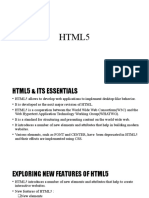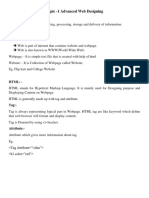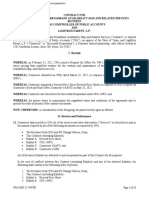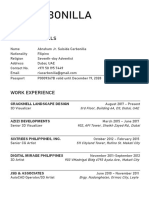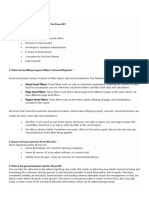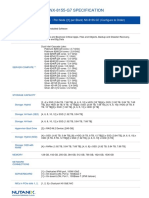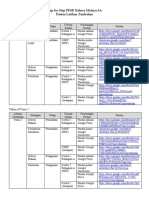0% found this document useful (0 votes)
4 views21 pagesHTML - 2
HTML5 is the latest version of HTML, developed collaboratively by W3C and WHATWG, introducing new semantic elements, input types, and multimedia features. It simplifies document structure with a straightforward DOCTYPE declaration and enhances forms with new attributes and input types. Key features include semantic elements like <header> and <footer>, new input types such as date and email, and improved multimedia support with <audio> and <video>.
Uploaded by
RajdeepzalaCopyright
© © All Rights Reserved
We take content rights seriously. If you suspect this is your content, claim it here.
Available Formats
Download as PDF, TXT or read online on Scribd
0% found this document useful (0 votes)
4 views21 pagesHTML - 2
HTML5 is the latest version of HTML, developed collaboratively by W3C and WHATWG, introducing new semantic elements, input types, and multimedia features. It simplifies document structure with a straightforward DOCTYPE declaration and enhances forms with new attributes and input types. Key features include semantic elements like <header> and <footer>, new input types such as date and email, and improved multimedia support with <audio> and <video>.
Uploaded by
RajdeepzalaCopyright
© © All Rights Reserved
We take content rights seriously. If you suspect this is your content, claim it here.
Available Formats
Download as PDF, TXT or read online on Scribd
/ 21



